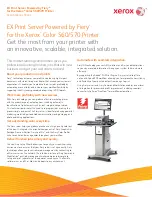
1/20/97
N
N
T
T
S
S
-
-
2
2
0
0
1
1
.
.
M
M
A
A
N
N
7
7
-
-
7
7
R
R
e
e
v
v
.
.
A
A
7.6.6
The desired (worst case time) accuracy in microseconds that the time server will attempt
to steer to. This variable is related to ntpEstError. Should ntpEstError be greater than
ntpDesiredAcc, the NTP alarm condition will be set (ntpSysLeap will be equal to 3).
Note: Outgoing NTP packets will have their leap indicator field set to ntpSysLeap.
::= { ntp 5 }
ntpEstErr OBJECT-TYPE
SYNTAX
INTEGER { (0..+2147483647) }
ACCESS
read-only
STATUS
mandatory
7.6.7
The current estimated (time) error in microseconds of the time server. This variable is
related to ntpEstError. Usually, this value is small and constant for a given type of time
server. However, when primary synchronization is lost, this value will slowly increase
with time as the time server's oscillator flywheels away from true time. Should
ntpEstError be greater than ntpDesiredAcc, the NTP alarm condition will be set
(ntpSysLeap will be equal to 3). Note: A primary time server's outgoing NTP packets will
have its leap indicator field set to ntpSysLeap.
::= { ntp 6 }
ntpSysLeap OBJECT-TYPE
SYNTAX
INTEGER {
No warning (0),
Last minute has 61 seconds (1),
Last minute has 59 seconds (2),
Alarm condition (clock not synchronized) (3)
}
ACCESS
read-only
STATUS
mandatory
7.6.8
This is a status code indicating normal operation, a leap second to be inserted in the last
minute of the current day, a leap second to be deleted in the last second of the day or an
alarm condition indicating the loss of timing synchronization. Note: A primary time
server's outgoing NTP packet will have its leap indicator field set to ntpSysLeap.
::= { ntp 7 }
















































